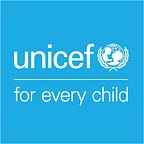Online risks for children
The Internet brings opportunities for expression online, but opportunity and risk often go hand-in-hand.
Children are increasingly using a variety of social media platforms to connect and keep in touch with their friends, express themselves, share information and surf online, putting themselves at increased risk of violence, exploitation and abuse. With the growing use of mobile phones, game consoles and other devices, children need to be kept safe from online dangers.
With the many opportunities now available to them online, children are accessing different social media sites and the Internet through their mobile phone, personal computer or both. Teenagers visit a mobile-phone repair store in Taiobeiras Municipality in Minas Gerais State, Brazil.
But opportunities and risk often go hand-in-hand. Jessica Marques in Taiobeiras Municipality was a victim of cyberbullying and social isolation in high school at age 17 when her phone was stolen and the nude photos of herself on it were shared in her school and all over the town.
Jessica, now 20 and a hairdresser in the town, was traumatized and felt ashamed, embarrassed and isolated by the situation. But, with strong support from her family and the few friends who stood by her, she returned to school.
“It was difficult but I managed. I’m still here,” she said.
Jessica’s friend Winny Moreira (centre), 17, playing cards at home with her brother and her mother, made an online video for girls about cyberbulling and harassment.
She graduated last year and plans to be a lawyer. “… I see so much injustice happening here in my country,” Winny said.
Adults have the responsibility of protecting children from harm as growing numbers of children in El Salvador are affected by violence being carried out via the Internet. Vendors and other adults on a sidewalk and street in Soyapango Municipality in San Salvador Department.
Parents and families must become aware of the risks and take steps to protect their children from online sexual exploitation and abuse. A woman stands under a sign for an electronics and computer supply store in a busy market area in downtown Soyapango.
[NAME CHANGED] Diana, 17 –some of her things shown here — was a victim of internet harassment and revenge at age 14, when she broke up with her boyfriend, then 17, and he posted nude photos of her online and sent the links to her friends and family.
Diana informed the police but dropped the case when they blamed her for what happened. She had the page blocked but six months later learned that her photos had been found on an online site in Europe. Diana deleted her social media account and now advocates for online safety.
As more and more children use different social media sites to connect with friends, they are vulnerable to various online dangers. High-rise buildings crowd the skyline in the city of Makati, a hub for sexual exploitation in metropolitan Manila in the Philippines.
Sexual exploitation in travel and tourism are among the dangers to children. The rise in these forms of exploitation has spurred Philippine Government efforts to enact safeguards, laws and programmes to protect children. A child sells goods in traffic in Makati’s ‘red light’ district.
Young children are most vulnerable to online sexual exploitation. [NAME CHANGED] Rosalyn (in red top), 17, also in the Philippines, was rescued with her six siblings during a cybercrimes raid on their home six years ago. The children now live in a government-run shelter.
Sexual violence against children is often carried out by people they know and should be able to trust. Rosalyn’s parents forced their two older daughters to participate in live streaming of sexual abuse. Rosalyn has now taken on the role of parent to her siblings at the shelter.
In Cebu in the Philippines’ Central Visayas Region, the beaches are a paradise for local residents and tourists alike, but the area is also known as a hub for sexual exploitation of children in travel and tourism.
[NAMES CHANGED] Analyn, 12, and Minda, 9, with a counsellor, live at a government-run shelter in Metro Manila.
Analyn began participating in live online sexual abuse shows for foreigners at the age of 10. “… my neighbour urged me to do it,” she said. “It wasn’t OK. I was scared.”
The shelter is a haven for girls who have been physically and sexually abused. With the rapid expansion of information and communication technologies, keeping children safe online is not just a parent’s responsibility, but is also an urgent global priority.
Learn more about #ENDviolence against children.
This photographic documentation was produced with the support of the WeProtect Global Allliance.
